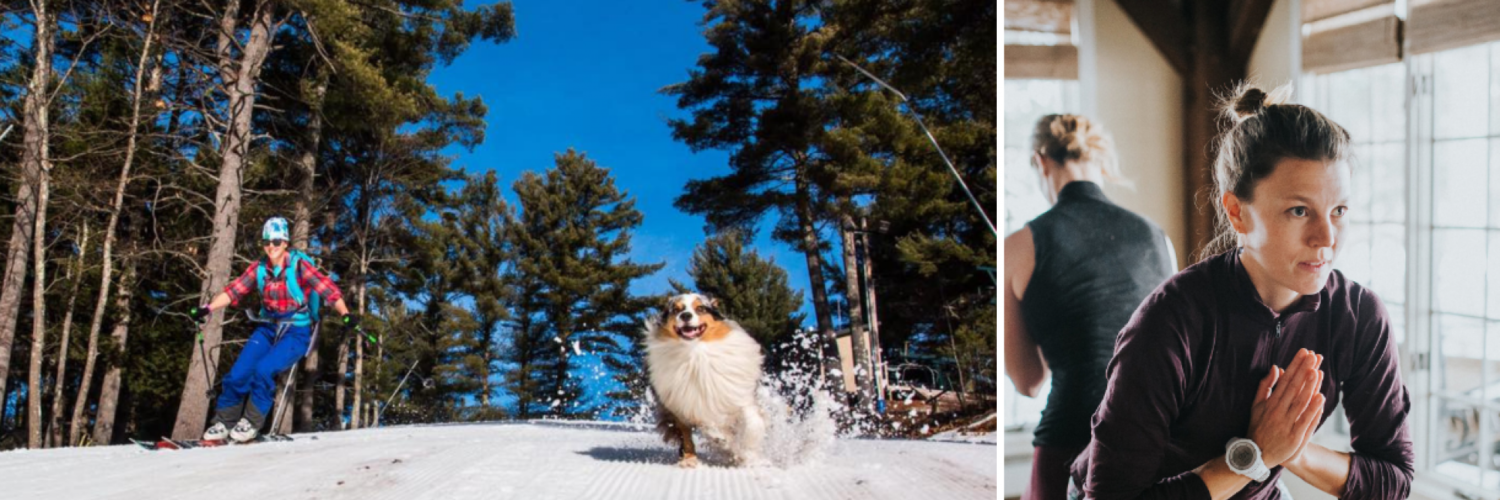
Train Smarter, Ski Better
Mother Nature has sent a clear warning shot that winter it is coming soon with the recent cold and snowy weather. It was exciting to think about dusting off our skis and jackets but more importantly are you physically ready to spend a day at the resort or in the backcountry?
Conditioning the body to resist and match the physical demands of skiing is not as daunting as we often think. As a Physical Therapist, I hear over and over that people do not know how to get the ball rolling to train for skiing. I find that when we can understand why the hard work will pay off, there is more motivation.
In order to better understand the importance and benefits of training for ski season before your first day on skis; I have broken down the 'WHY' and 'HOW' of pre-season-ski-training with helpful hints and easy-to-follow workout videos.
The WHY
Training Muscle Groups:
Skiing is especially taxing to our quad muscles (front of the thigh) due to the constant knee flexed posture that is created by the ankle bend in the ski boot. As we ski down the hill, our knees work as pistons to absorb terrain, generate energy through the ski and maneuver our skis. Thus the infamous quad burn. To avoid this pain, you can train before the season starts to condition your muscles in similar scenarios. This is just one example of a specific muscle group but working the hamstring muscles (back of the thighs), glutes (butt muscles), core (abdominal and back muscles) in your pre-season conditioning has similar carryover.
Injury Prevention:
As a Physical Therapist, I see many ski-related injuries that could have been prevented with improved strength, body alignment and knowing your limits. Muscles work to move our joints pulling bones towards or controlling movement away from each other. Another critical role in muscle function is stabilizing and protecting joints. If you are forced to make an awkward, sudden movement on your skis than you may be at risk of stressing or damaging a joint. Or if you fall, your joint stability and muscle strength could prevent a torn tissue from happening.
The HOW
Exercises:
The reason you see lunges, squats, jumping, etc. in ski conditioning routines is that they target and stress muscles similar to skiing movements. It is challenging to recreate the exact stress and strain but these are close.
Focus:
As a Physical Therapist, the major piece lacking in an exercise routine is focus. I find that as a population we tend to just fly through exercises and not spend the time think about what muscles are firing or if our alignment is correct. In my practice, I teach my athletes and patients to slow down and complete their exercise with intention and precision. This generates correct movement patterns and ends up being safer and stronger in the end.
Exercise Videos:
Last fall, Andrew Drummond and I, created 5 workout videos that are geared towards ski season conditioning and injury prevention. As I describe each exercise, I demonstrate what the correct alignment should be and how to self-monitor. And what specific muscles should be firing to generate each motion or exercise. These details will make the difference in getting the most out of the workouts.
Each video should take 20-30 minutes. Perform a video 2-3x/week, you can pick any order you want. Hiking, biking and running work well as cross training.
Video 1:
Video 2:
Video 3:
Video 4:
Video 5:
About Hilary McCloy, PT, DPT.
Hilary grew up ski racing in Vermont and New Hampshire before qualifying for the US Alpine Ski team. She spent 5 years on the team before transitioning to UVM to finish out her racing career. She then moved to California and worked towards her Doctorate in Physical Therapy before returning to NH and the White Mountains. She has turned most of her skiing focus to backcountry skiing as rekindled her love for hiking and had become an avid Ultrarunner.
Professionally, she has found that her passions are focused around injury prevention for athletes and teaching others how to understand how their body works. She enjoys giving lectures and running injury prevention workshops. Check out her websites for many diverse offerings: www.hilarymccloy.com and www.backcountryblissretreats.com. Hilary currently works at Mountain Center Physical Therapy in Conway, NH.
Photo credit to Andrew Drummond and Cait Bourgault.


